Beat the winter blues with a road trip to these Arizona National Parks
Arizona is home to three stunning National Parks and you can visit them all with our adventure-packed road trip
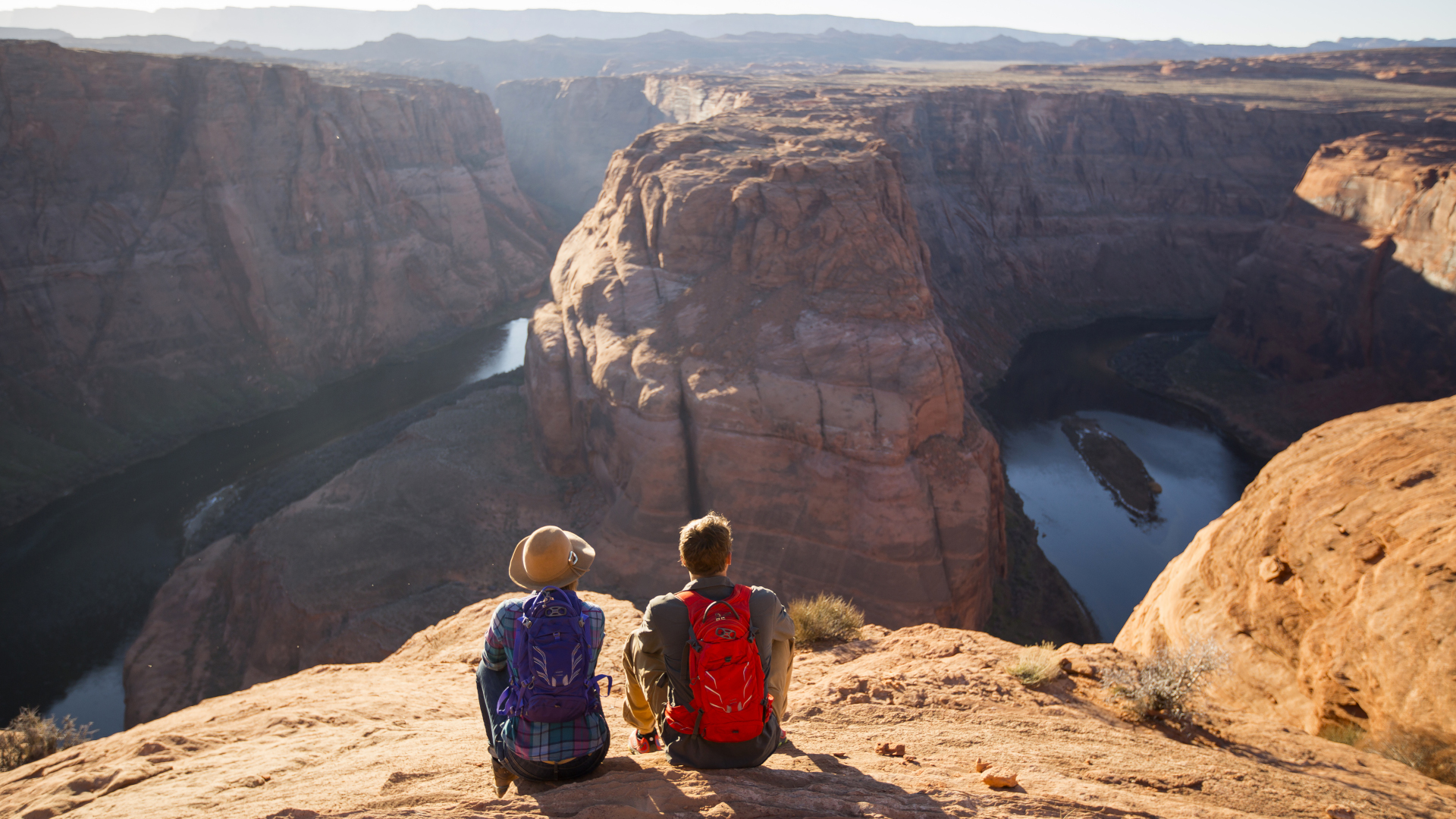
Escaping to Arizona in the winter isn’t just for old people – the state’s breathtaking natural scenery is an absolute paradise for anyone who likes an adventure, and winter is the perfect time to do it. The near-constant bluebird days in the Grand Canyon State are like a tonic for your winter blues, and while the ferocious southwest summers can be a major impediment to hiking, trail running and camping here, winter daytime highs hover in the 50s, 60s and 70s while nighttime lows rarely drop below freezing. There are some stunning National Parks in Arizona, and with just a little planning, you can visit them all in our wild southwest road trip.
Arizona is home to three National Parks, two of which are most definitely overshadowed by the most popular one – the Grand Canyon. If you only have time to visit one, that is the one, but if you can spare a couple of extra days, you can see splendid giant cacti and magnificent painted desert landscapes in addition to the world’s most iconic canyon.
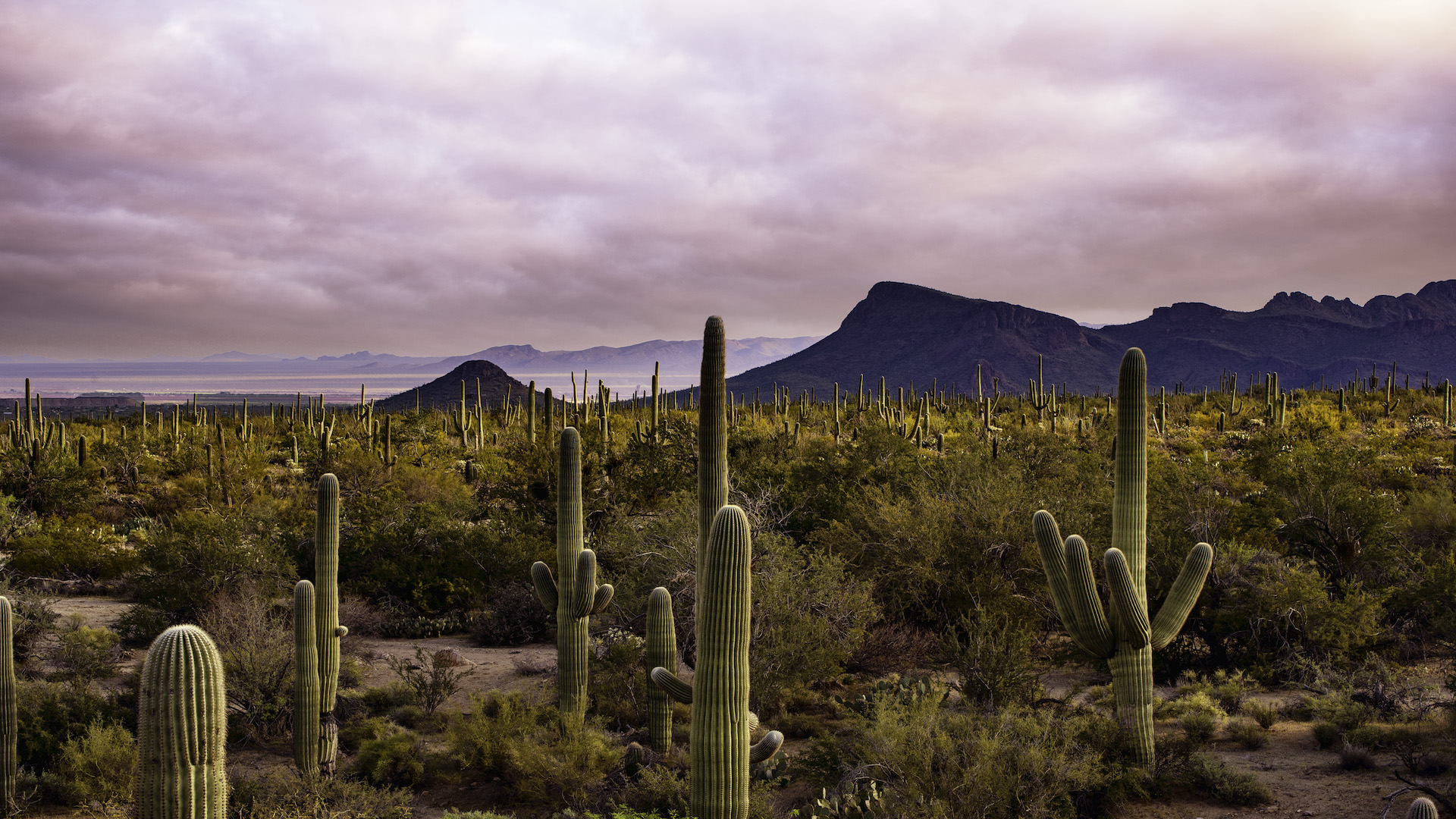
Our itinerary takes you round all three National Parks in Arizona in a loop, beginning and ending in Phoenix. Of course, you can travel in either direction, but we like to drive south to start in Saguaro, saving the best for last. As for timing, if you’re really in a hurry you could complete this road trip in three days, but of course we always err on the side of eking out as much adventure as possible and think you’ll want to stretch it out to at least four or five days.
For this time of year, you’ll be able to complete most hikes wearing hiking boots or even hiking shoes, whichever you prefer, long hiking pants and it’s always a good idea to dress in hiking layers for those cold desert nights – think a base layer, a fleece jacket and a down jacket over the top. Further, Arizona is home to some pretty cool wildlife, so make sure you know what to do if you meet a snake on the trail. Now, without further ado, let’s hit the road!
Stage 1: Phoenix to Saguaro National Park
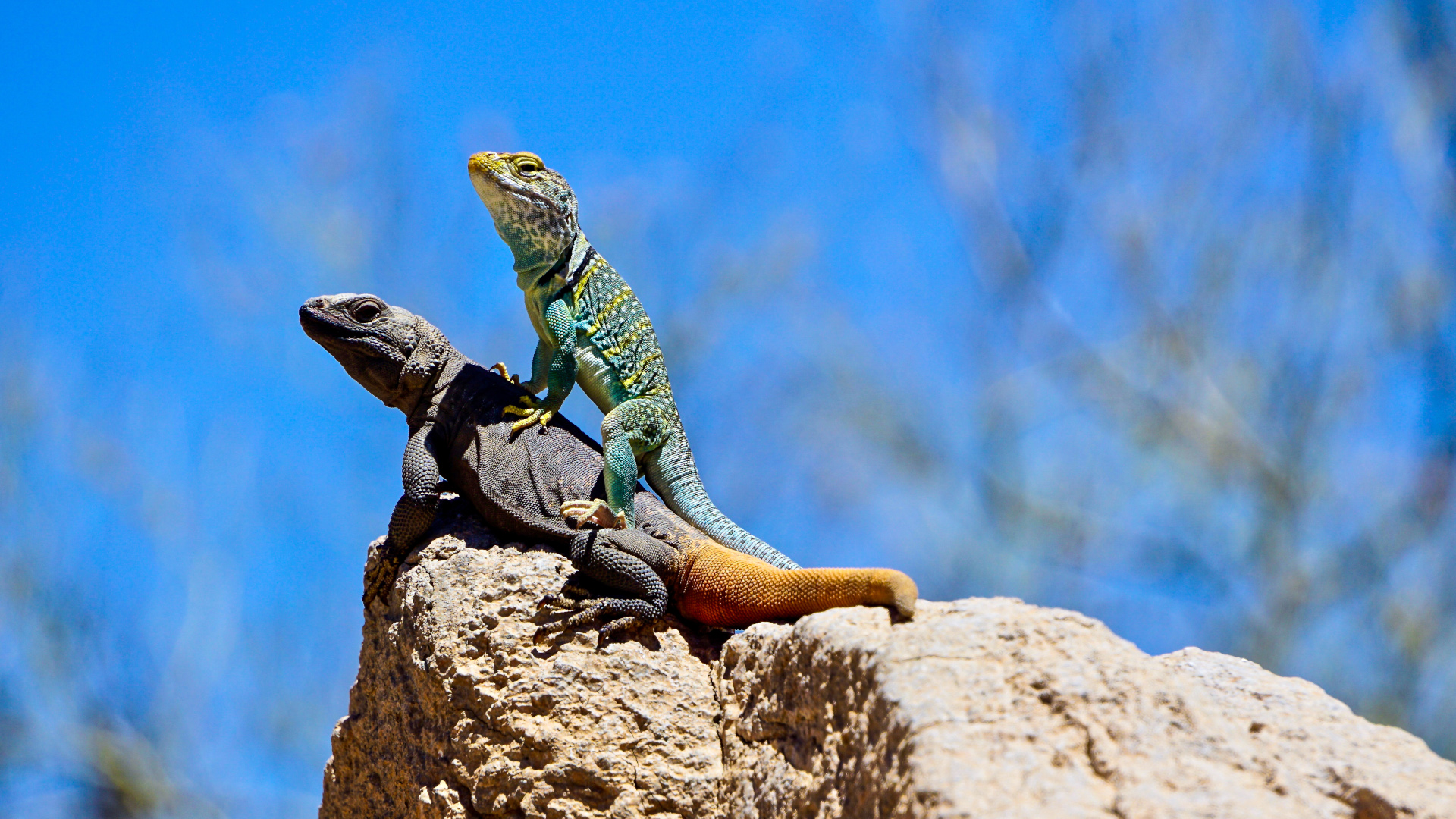
The tour begins with an easy first drive on I-10E towards Tucson. In well under two hours, you’ll find yourself in Saguaro National Park, named for the giant cacti that is the universal symbol of the American west that you’ll see here framed by picture perfect skies and glorious sunsets. This small desert park is considered one of the best parks in the country to see wildlife such as rattlesnakes, lizards, tortoises as well as the venomous Gila Monster reptile. The park, which straddles the lovely town of Tucson, is also home to leopard frogs and tree frogs, hawks and hummingbirds and desert mammals like mountain lions, kangaroo rats and foxes.
A day should be ample time to get a feel for Saguaro if you’re in a rush. The park is divided into sections, separated by Tucson, and both offer similar landscapes. The Tucson Mountain District to the west is the area you’ll reach first, upon approaching from Phoenix, and you can stop here to hike through the saguaros on the 2-mile Gould Mine trail, or if you’re traveling with kids, try the shorter, scenic Valley View Overlook with lots of wildlife viewing opportunities. You may also want to view the petroglyphs on display at King Canyon.
From here, you can head into Tucson for lunch before visiting the Rincon Mountain District to the east. There are loads of great trails to choose from here, such as the very popular 3.7-mile Mica View Loop Trail, or the 3.3-mile Garwood Trail.
Advnture Newsletter
All the latest inspiration, tips and guides to help you plan your next Advnture!
If you are staying the night, there are no developed campgrounds in Saguaro, nor is there much in the way of dispersed camping around Tucson. However, the park does have six backcountry campsites that you can hike to, so long as you have a permit, and of course there’s loads of lodging in Tucson.
Stage 2: Tucson to Petrified Forest National Park
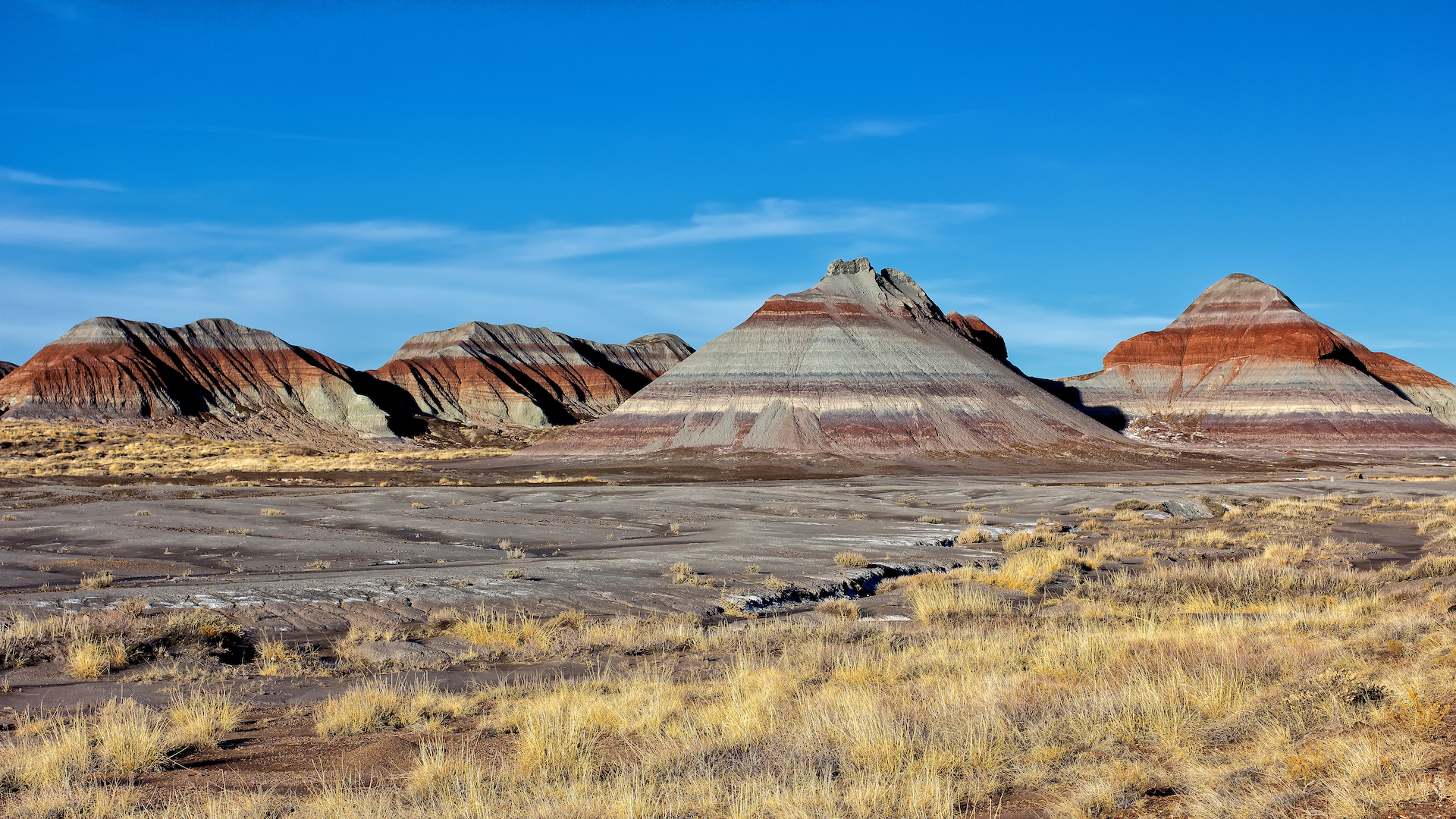
Day two starts with a long drive that means at least 4.5 hours in the car, so plan to leave early if you want to get to Petrified National Forest in time to explore that same day. If you’re doing so, stop in Holbrook to grab a packed lunch or plan to eat at the Painted Desert Diner in the park. However, you’ll be driving through some spectacular desert scenery as you pass through San Carlos Apache Indian Reservation and Fort Apache Reservation, so if you have the time, you could make this a driving day, taking lots of stops, and plan to spend the night in Holbrook and visit the park the following day.
Petrified Forest National Park is named for its large deposits of fossilized trees, but the colorful badlands here are equally, if not more, impressive. The park is larger than Saguaro, but it’s another National Park that you can easily visit in a few hours. What’s somewhat unusual about this park is that it isn’t open 24 hours – in fact, it’s only open 8 a.m. to 5 p.m., but if you reach it by lunch time you’ll still have plenty of daylight to explore (sun sets around 6 p.m. in Arizona in January).
If you’re really on the move, you can simply take an hour or so to drive through the main park road (28 miles) and stop at several scenic overlooks to se sights such as the famous Teepees. With a couple of hours, you can stretch your legs by adding a few short strolls on the Painted Desert Rim Trail and Blue Mesa Trail. With a half or full day, you can get off the beaten track and into the Petrified Forest backcountry for some rugged adventure.
Be aware that there is no frontcountry or dispersed camping in the park, however you can obtain a free wilderness permit and hike at least one mile from your car into the Petrified Forest National Wilderness Area to spend the night (you’ll want to be prepared for backcountry camping). There are lots of campgrounds in the surrounding counties, nearby National Park Sites and surrounding National Forests, however, which you can explore on Petrified Forest’s website and of course you can grab a room in Holbrook for the night if you want a good rest after all that driving.
Stage 3: Petrified Forest National Park to Grand Canyon
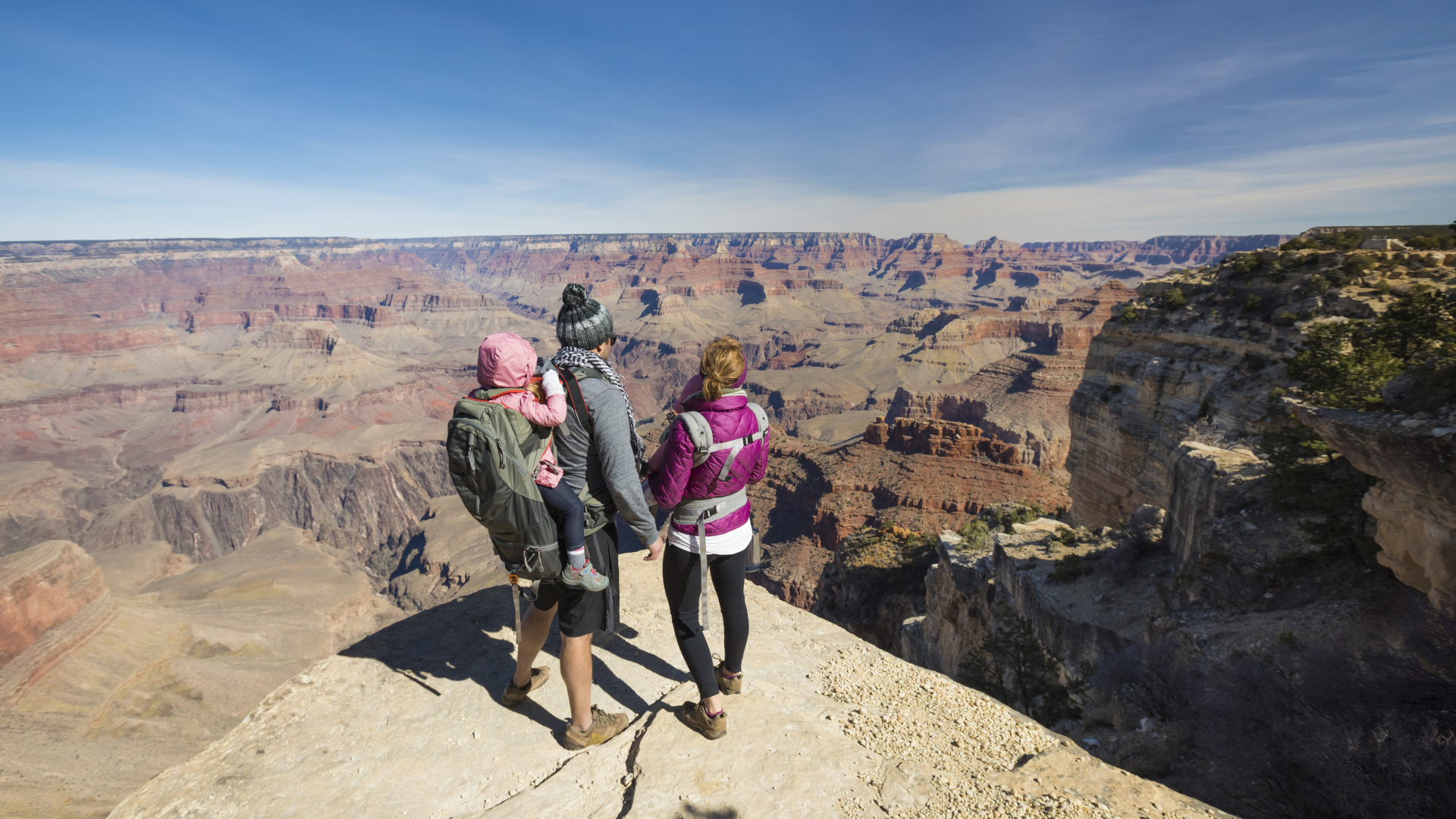
Leaving the best for last, it’s time to head to the Grand Canyon. Today’s drive can be accomplished in under three hours which will seem like a breeze compared to yesterday.
Now, the Grand Canyon barely needs any introduction from us, but just in case you think the whole thing might be overblown, it isn’t. This geological marvel was carved by the Colorado River on its journey from the Colorado Rockies to the Gulf of California, though at over a mile deep you can rarely see it. The canyon is 277 miles long and up to 18 miles wide, making it one of the biggest canyons in the world. Scientists don’t know how old it is, but some estimate parts of it may be 70 million years old. The Grand Canyon is home to the Hualapai, Hopi and Havasupai tribes, the latter of which live in the canyon’s only town, Supai Village, an eight-mile hike from the canyon’s rim.
Though this iconic spot is easily one of the most photographed places in the world, there’s nothing quite like standing on the canyon rim and taking it all in with your own eyes. We consider it to be one of the best National parks to visit in winter and while the North Rim is closed in winter, the South Rim is open year-round and the frosted red rock walls of the canyon are truly a sight to behold. Highs are likely to be in the 40s so you’ll want to dress warm, but any snow at this time of year is likely to be a light dusting at most and you’ll be able to enjoy big views of the canyon from the popular Bright Angel and South Kaibab trails without the usual tourist traffic.
Plan to spend at least a full day here if you can, and longer if you have the time, taking advantage of the year-round frontcountry campsites and lodging within the park. As for what to do, start with our pick of the best hikes in the Grand Canyon and focus on those on the South Rim, which cover everything from short rim strolls to epic descents into the canyon.
When you’ve finished soaking in the sights of the Grand Canyon, it’s about 225 miles south to Phoenix, or of course you can keep the party going and head to Vegas, which is a mere 275 miles west and a great place to clean up after a road trip.
- The best hiking boots: rugged footwear for tackling tough terrain
Julia Clarke is a staff writer for Advnture.com and the author of the book Restorative Yoga for Beginners. She loves to explore mountains on foot, bike, skis and belay and then recover on the the yoga mat. Julia graduated with a degree in journalism in 2004 and spent eight years working as a radio presenter in Kansas City, Vermont, Boston and New York City before discovering the joys of the Rocky Mountains. She then detoured west to Colorado and enjoyed 11 years teaching yoga in Vail before returning to her hometown of Glasgow, Scotland in 2020 to focus on family and writing.

